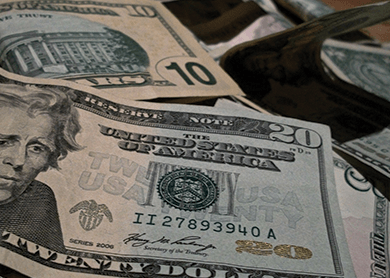
US Federal Reserve officials could be in a jam as they prepare for their Sept 15-16 policy meeting: The growing divergence between the relatively healthy US economy and the turbulence elsewhere is complicating their deliberations over whether to begin a rate-raising campaign immediately or delay any action until December or beyond.
The US jobs report today could be the clincher, whether it is strong, weak or middling.
If domestic economic data were all the Fed needed to take into consideration, the temptation to raise interest rates for the first time in more than nine years probably would be irresistible.
Job creation has been solid and gross domestic growth has bounced back after a disappointing first quarter. Moreover, as was made clear on Wednesday with the release of the Fed’s Beige Book, broad-based economic activity remains on track and wage pressures are more evident.
Although the economy isn’t ready for the kind of traditional rate-hike cycle of past eras — one that includes increases at quasi-automatic intervals and that returns rates to the historical average policy level — the current domestic economic conditions would justify (and have justified) a lift-off from the exceptionally low floor of zero per cent.
The difficulty facing the Fed isn’t just the weaknesses in the global economy, but also the uncertainty about how its policy actions could end up indirectly undermining domestic growth, in particular by amplifying international financial instability and, therefore, the threat of adverse spillback from outside US borders.
There is little doubt that the emerging world, led by China, is slowing, and in a manner that is unlikely to be offset by an acceleration of European and US growth. There also is concern about whether the recent turmoil in emerging-markets financial assets, including the stunningly disorderly currency depreciations, could extend to the real economy — first within a systemically important emerging nations (such as Brazil, China, Korea, Russia and others), then spreading to an advanced nation.
In this environment, the Fed will — and with good reason — deliberate very carefully before undertaking a rate increase that could feed global instability.
As the central bank weighs these opposing influences, the jobs report for August could be the tiebreaker.
Data pointing to a continued robust expansion of employment (another month of 200,000-plus new jobs), with a notable pickup in wage growth, could tip the balance in favour of a September hike, especially if the labour participation rate remains stuck at its current, historically low level.
By contrast, a weak report — showing continued sluggish wage growth, accompanied by a decline in the pace of monthly job creation — would tip the balance toward maintaining the status quo.
Also, if the report is middling — say, solid job creation, but no meaningful wage recovery — the Fed could decide to wait. It would be choosing to minimise risks pending stronger evidence the US economy is resilient enough to withstand external headwinds.
In a calmer world, there would (and should) be less obsessive attention to the timing of this first rate hike, especially given the relative strength of the US economy. Under such circumstances, the central bank would have succeeded by now in diverting attention to the broader effects of what is likely to be its loosest tightening cycle (one that will involve a very shallow path of rate hikes, a stop-go pace and an end point for the policy rate that is below historical averages).
But volatile financial markets and a fragile global economy give the Fed little choice but to worry about international conditions and repercussions. That makes it likely that only an exceptionally strong jobs report would give officials the confidence to act this month. — Bloomberg View
Mohamed El-Erian is the chief economic adviser at Allianz SE.
This article first appeared in digitaledge Daily, on September 4, 2015.